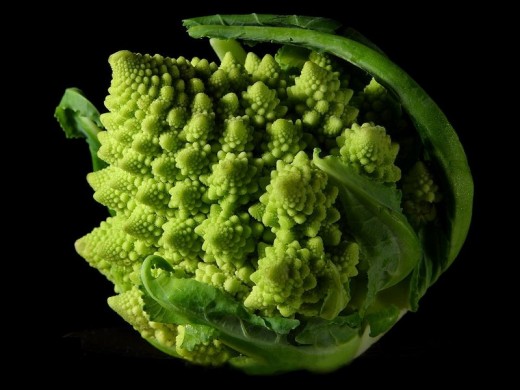Math is crowned king part 3

The early twentieth century took us out of the idea of thinking we could know everything due the fact that cause and effect rule the world with law and order. Now science was telling us we could no longer look at the world from a perspective of absolutes anymore in the quantum world.
That which we are made of; that which all things are made of, can only be talked about in terms of probability. But not to worry. These strange effects like quantum entanglement and wave particle duality do not affect the macro world; only the micro world.
Heisenberg said that we should never feel those effects because of the complexity of the large scale world, even though the small scale world is what makes it up.
Schrödinger’s cat has long been sighted as if it was meant to explain to the laymen how the quantum world work. But it is very misunderstood. Schrödinger wasn’t giving this example as a tutorial; he was showing the scientific community how absurd the findings of QM really were.
Let me make it a little simpler for all of us. If were to spot a cat on the road, you would assume that the cat can only be in one of two states. If it either dead or alive at the point where you first see it. If dead, it may have been dead for some time.
But Schrödinger is telling us the absurd story that until we take its vital signs, the cat is both dead and alive at the same time.
The first example is how the macro world works. The second is the way the micro world seems to work. So in effect, it is not about the macro world because our level of reality doesn’t work that way. The cat is either dead or alive. Newtonian physics works fine here. All is well.
But not so fast.
Relativity had added a new dimension to the mind of the masses. Relativity began to be seen by philosophers as not just about physics, but about truth itself. Uncertainty was creeping in all over the place.
Relative truth is an easy problem to solve. I hear so many say: “truth is relative” as if it is supposed to mean it could be anything according someone’s perspective. But in fact truth is not relative to perspective, it is relative to a set of conditions and variables.
One can come to absolute truth through understanding the relationship they are looking at. An absolute truth comes in the form of an “if” statement. If the conditions are right water will boil at 100 degrees C. If the water is not of a specific purity and if you are not at a specific altitude, the boiling point of that particular sample may be higher or lower than 100 degree C. But once you know the conditions and the temperature your water boils at, it will always boil at that temperature if all the conditions remain the same.
Hence absolute truth can be found, regardless of human perspective.
I think it was Einstein or someone of comparable intelligence who said: “The definition of insanity is doing the same thing over and over again and expecting different results.” But that’s also the definition of when you have the absolute truth: when you do things over and over and get the same results. It’s the basis of experimental science.
So once again hope abounds even though Heisenberg insisted that the quantum was not deterministic, as opposed to the macro world which is deterministic. In fact, one can’t talk about the uncertainty principle with understanding that Heisenberg himself never called it that. He called it the indeterminacy principal.
However, what he meant by that was that: at the quantum level (only) the physical aspect of that world does not exist in a deterministic form. Rather it exists as probability and potential. His mathematical formulas, however, were all about a new way to find the limitations of how accurately we could predict quantum activity and in essence, creating what Newton had created; a quantum understanding of motion, and the new tool we call quantum mechanics. With his understanding of uncertainty he was able to make very accurate and very certain predictions.
As I said many times, the interpretation of why QM works or what it means is irrelevant. The mathematical formulas work. The Copenhagen Interpretation of QM, culturally, is widely thought to be the definitive interpretation because it was created by Heisenberg and others working on the project. But other than the uncertainty principal it is not used in the mathematical formulas and rules that are QM.
There are dozens of interpretations of QM, and I have written about some of them before. But they are only interpretations or models of what the findings of QM mean. They are educated guesses ranging from science fiction to science philosophy. No interpretation has been proven.
Hence why according to some scientists philosophy where physics is concerned is dead. Math is crowned king, the language of the quantum world that makes us. We can only predict the world by statistical probability. Who would have guessed the same goes for the macro world; and particularly for human beings?
In the early part of the century we started to look at human behavior in a new way. We wanted to study it more closely and in a scientific manner. Freud and Jung created a new field of study called psychiatry. Later people like Skinner created fields like Radical Behaviourism. Each was trying to predict the way humans react, primarily on an individual level.
However, since chaos theory hit the scene behaviourism is looking to a new kind of statistics in order to predict how humans behave in groups. Marketers are particularly keen on this new tool. It can even show them how to effectively steer and manipulate crowds
Chaos theory tells us that while humans have no over ruling patterns or laws as groups (and have their own as individuals) a group does have a minimal amount of basic running rules. An example of basic running rules would be what I mentioned about trees having two basic running rules: grow a little and then divide. This new understanding of group dynamics is just getting started, and is already reaping rewards.
Chaos theory is being called: The Third Revolution; Relativity being the first and QM the second. It seems as though Heisenberg may have been wrong. Spooky action at a distance may have its manifestation here on the macro world after all, in the form of chaos.
Have you ever heard of the jelly bean experiments? We have all seen or heard of someone guessing how many jelly beans are in a jar to win a prize. It turns out that most people are not very good at it. Some get it right once and never seem to be able to come close again. But the amazing thing is that it was discovered that if you average all the guesses, you usually come up with the right answer within one percent accuracy. The more people you involve, the more accurate the outcome. Good news for democracy, I suppose.
But what does it tell us about group dynamics? It seems to tell us that while the individual may have been way off the mark, the combined guesses of the group, averaged, gives everyone together the right answer.
Someday perhaps I will do an experiment where by the participants will all win something if the group can correctly guess how many jelly beans are in a jar. So far as I know, what we have studied is what the group does with individuals all in it for themselves. What happens if self interest is in the group?
What this says about people and groups is not as important to me as what it says about the patterns of our existence. Because this experiment deals with sentient thinking beings, who’s guesses are mostly way off, it seems to rule out the idea that the mathematics are just convenience.
Chaos theory seems to be showing us that everything is based on this wonderful language we discovered called mathematics, and the world is much more complex than we originally thought. It is also based, not only on natural laws like the laws of physics, but on simple running laws of behaviour which can be easily uncovered.
We are back to a place of certainty through uncertainty, determinacy through indeterminacy. The pattern is the same as I mentioned before about absolute truth coming through relational or relative truth.
In the end, it is the patterns of existence that tell us most about our world, and those patterns can be stated mathematically in beautiful and profound ways









